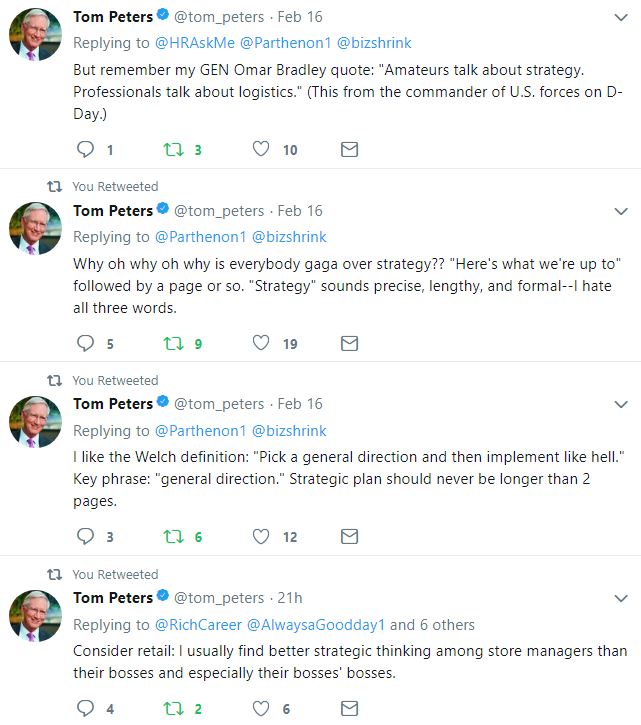How much of a business and marketing strategy do you need? And how much of success is based on tactical execution?
Certainly you need to understand who your customer is, why they buy, and how to reach them; your competitors; and your competitive differentiators. (If you don’t have any, you better create them.)
But these things are changing quicker than ever these days. The breakthrough iPhone was out less than a year before competitors started to appear despite Steve Jobs’ claim that “we filed for over 200 patents for all the inventions in iPhone, and we intend to protect them.” I can’t tell you the number of clients who have said to me, “Our competitors are always stealing our messaging.” (My clients never do that.)
Over 30 years ago Amar Bhide, now at the Tufts Fletcher School, wrote in his seminal Harvard Business Review article, “Hustle as Strategy”, “A surprisingly large number of very successful companies…don’t have long-term strategic plans with an obsessive preoccupation on rivalry. They concentrate on operating details and doing things well. Hustle is their style and their strategy. They move fast, and they get it right.”
I noticed over the weekend that management author and consultant Tom Peters, who engages with others very actively on Twitter (he doesn’t just post), was discussing similar thoughts:

This emphasis on being close to the customer and nimble is certainly applicable to modern marketing, which is far less tied to the Big Idea (the Marlboro Man or Jolly Green Giant) and instead puts out hundreds of small ideas (tweets, emails, blog posts, ads, etc.), sees which connect and scales those.
And it reflects the agile marketing approach. I recently interviewed agile marketing maven Jim Ewel for the book I’m writing on my Bullseye Marketing Framework (I’ll be releasing an excerpt of his interview soon). Jim has been a senior marketing executive at Microsoft, and a successful CEO, so he certainly knows the enterprise strategy approach. Today he advocates a series of quarterly plans, rather than an annual one.
I’ve written 15-20 page marketing strategies for companies, and run workshops to help them develop 12 month action plans. I think these are useful (if read and used) at companies that have traditionally under-invested in marketing and need a sense of the road ahead and not just “we’ll figure it out as we go”.
In Only the Paranoid Survive Intel CEO Andy Grove explained how they made the strategic decision to abandon the memory chip (RAM) market and focus on microprocessors. They had a good reason: they were being hammered in the market by Japanese memory chip manufacturers. One of my favorite business books is Jim Collins’ Good to Great. While he provides some great data and cases, you could summarize the entire book in three words: “Focus and execute.”
On the other hand in Zero to One Peter Thiel laid out a strategic approach to business that may be useful for, oh, maybe 1% of companies (my critique here).
With or without a strategy a strong emphasis on focus and execution is central to success.
Warning: Trying to access array offset on false in /home1/lgudema/public_html/rch-content/themes/rechrisdesign/inc/shortcodes/share_follow.php on line 23
